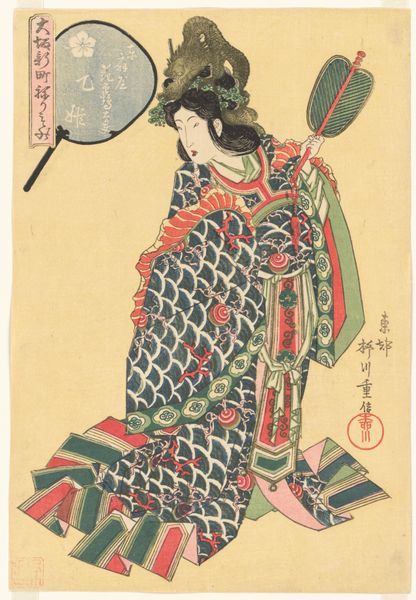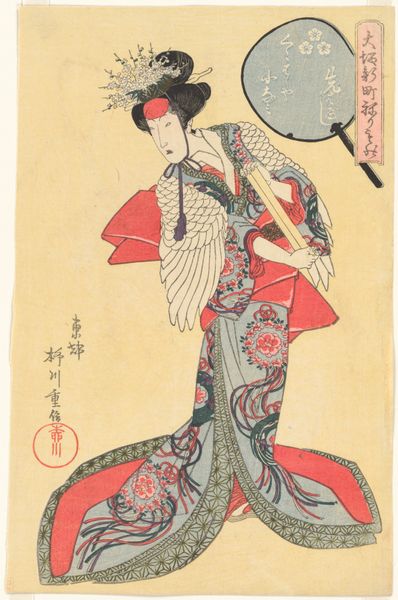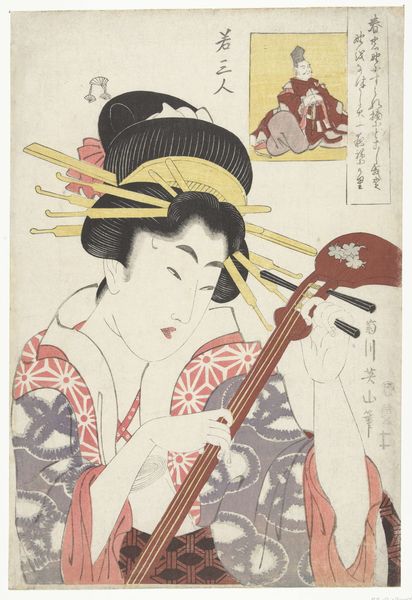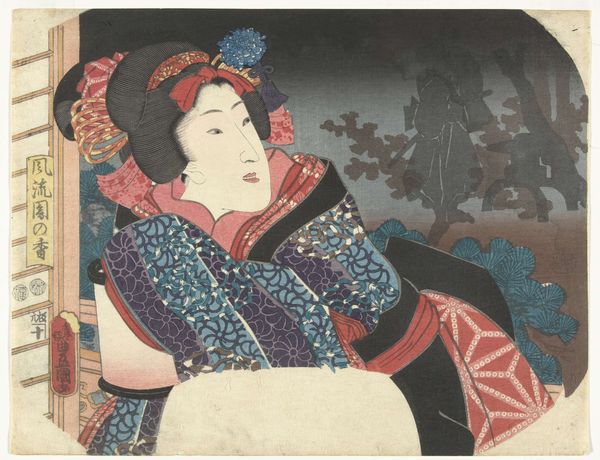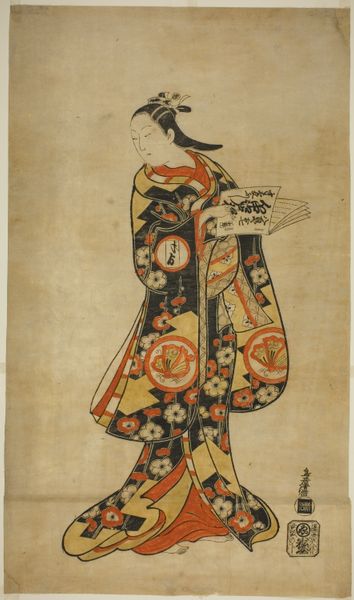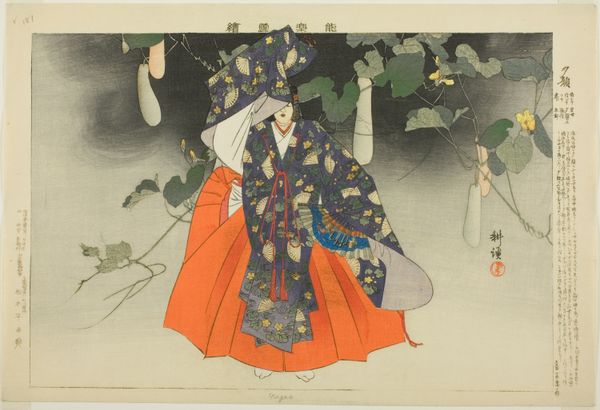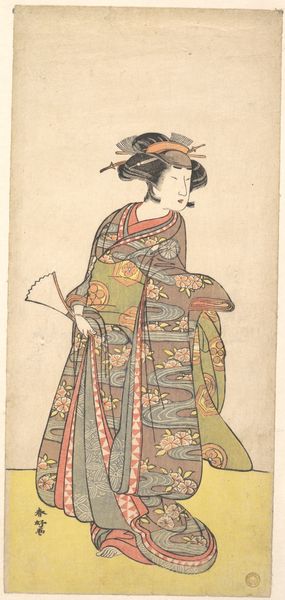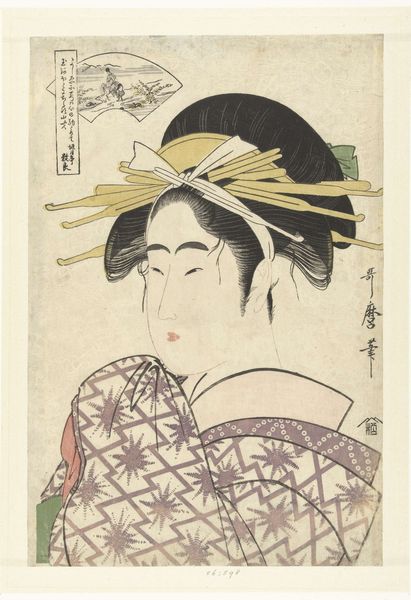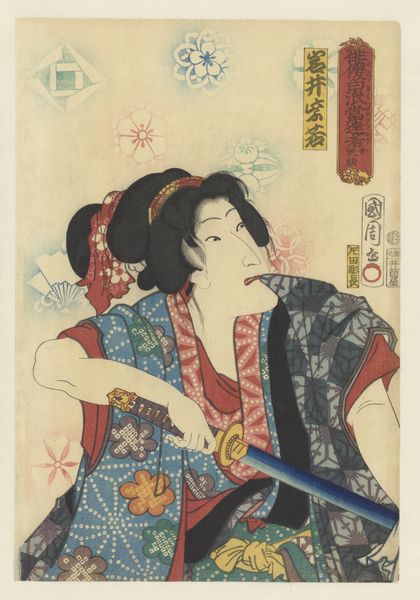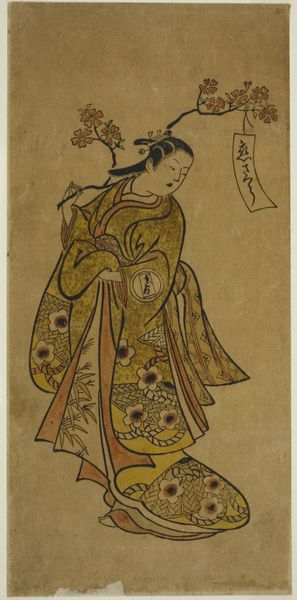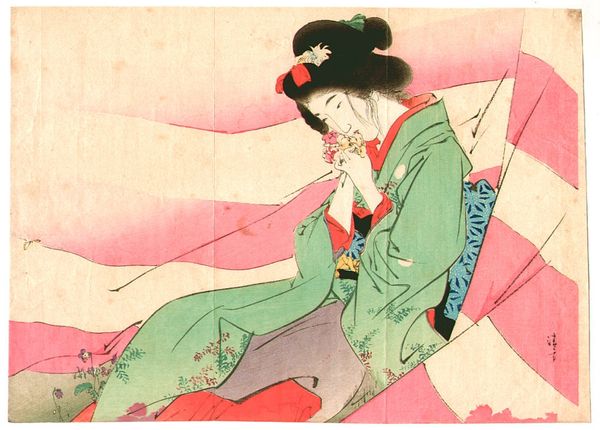
Dimensions: height 370 mm, width 728 mm
Copyright: Rijks Museum: Open Domain
Curator: We are standing before "De 53 paulownia bomen bij de Torenpoort", which translates to “The 53 Paulownia Trees at the Tower Gate”, attributed to Toyohara Kunichika and possibly dating back to 1896. It’s a striking woodblock print, currently housed at the Rijksmuseum. Editor: The theatrical intensity is immediately palpable, wouldn't you agree? The colors are so vivid, and the pose, though stylized, conveys such controlled power. I find the interplay of patterns on the robe particularly compelling; a visual dance of form and color. Curator: Absolutely. It exemplifies ukiyo-e, literally "pictures of the floating world." These prints weren’t mere decorations but a significant form of media reflecting the burgeoning urban culture. Think of the labour that went into the process - each colour meticulously carved into a separate block, inked, and then pressed onto the paper. The artisan's skill directly mediates our experience of the art. Editor: A fascinating point. And one might argue this piece engages in a sort of visual semiotics. The figure's exaggerated features—the intensely lined eyes, the deliberate stiffness—communicate a very specific emotional tenor and character type rooted in theatrical tradition. We should remember, in addition, that the cost of colours must be high for this woodblock printing. The pigment is likely not natural here and we can't forget the value assigned to labour! Curator: Precisely. It also illustrates the cultural significance of Kabuki theatre. These prints, mass-produced as they were, also democratized access to representations of celebrated actors and performances. A tangible way for people to participate in and consume theatrical culture. And notice that white color on the background is actually the base-paper material! That's an incredible detail here. Editor: A powerful connection. Considering its structure, it seems more than just a portrait; it's a study of artifice itself, inviting us to decode its signs. A dialogue emerges about identity and representation. Curator: Indeed. Looking closely, it strikes me how this artwork exemplifies the rich exchange between artistic craftsmanship, theatrical spectacle, and wider social accessibility in the late 19th century. It goes beyond being a print. Editor: Ultimately, it’s a piece that asks us to contemplate the artifice, the skill, and the cultural milieu woven into its very fabric. It provides not just beauty but invites analysis of process and historical intention.
Comments
No comments
Be the first to comment and join the conversation on the ultimate creative platform.
